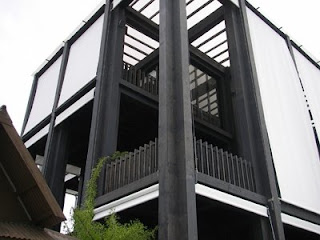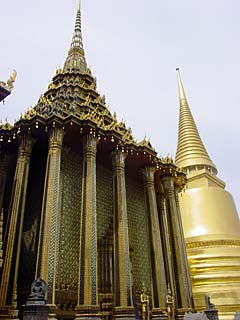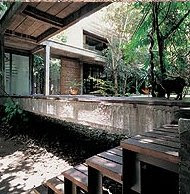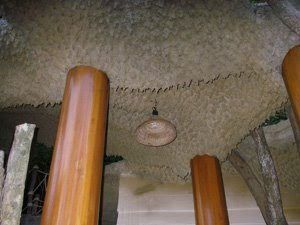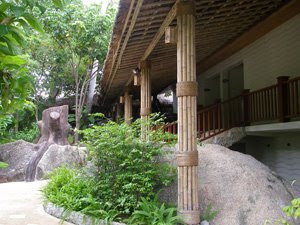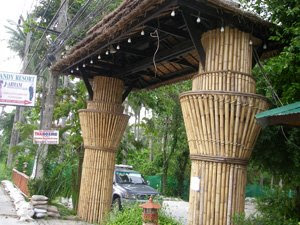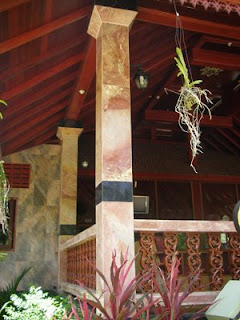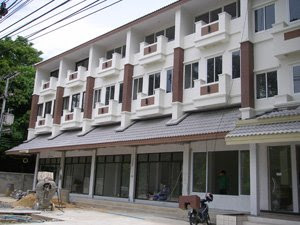This is a good example of how a problem can be viewed as an opportunity for creativity. The Bangkok Transit System 'Sky Trains' have changed people's perceptions of the city. Before nobody paid much attention to the fronts of apartment blocks, but now they've become exposed to commuters on the trains. Eye-level has been raised. The result is that tenants have lost their privacy and Bangkok 'looks' uglier.
Studio ELEVATION and Overdose have come up with a clever solution to the problem - pixel art. The idea is to add a light weight structure to the facade of a row of apartment blocks. The structure is a lattice which contains many small boxes like pixels. The pixels are designed to combine to create patterns. The tenants thus regain their privacy and train users have something interesting to look at. The design also brings together the community because the design of the pixel art only works through co-operation.
The facade 'pixels' are made from wooden crates sourced at the Port of Bangkok. The wood is treated to weather proof it. This is a good example of Green Architecture because it is using low-cost recycled materials.
The project also has an 'organic' and 'democratic' aspect to it because as tenants replace their individual pixels the pattern changes and develops. There is no top-down authority. Every 'pixel' is of equal value.




